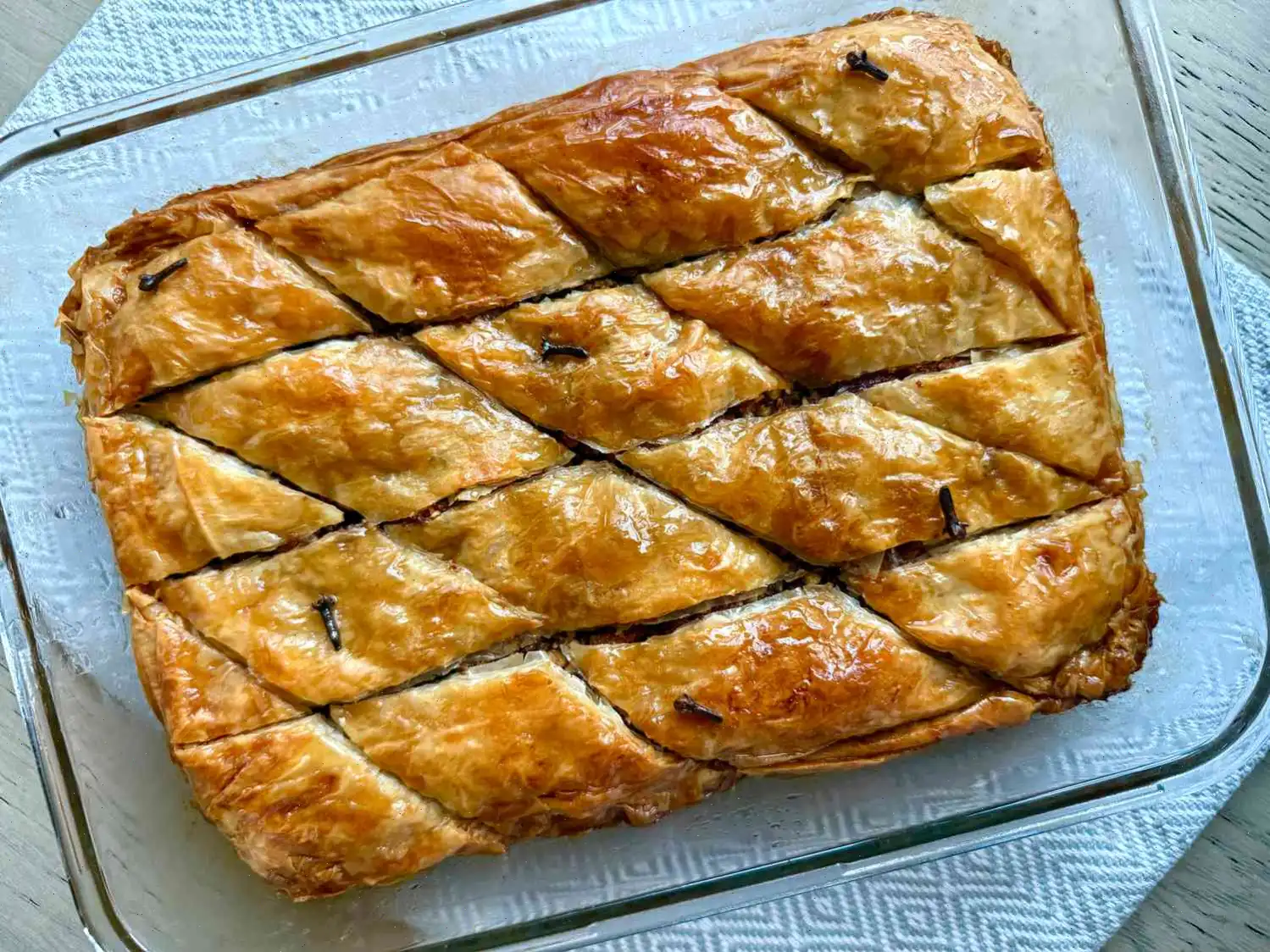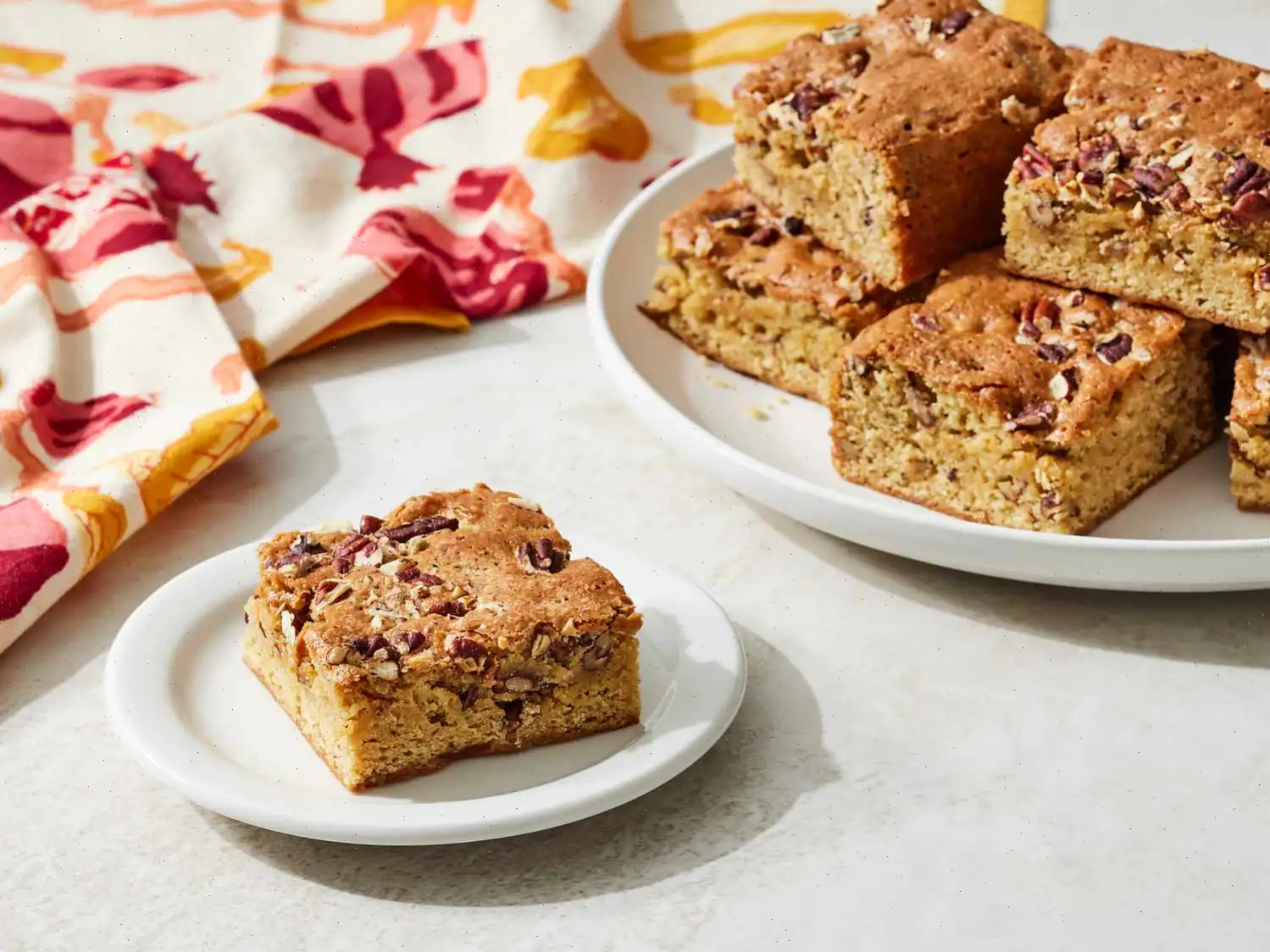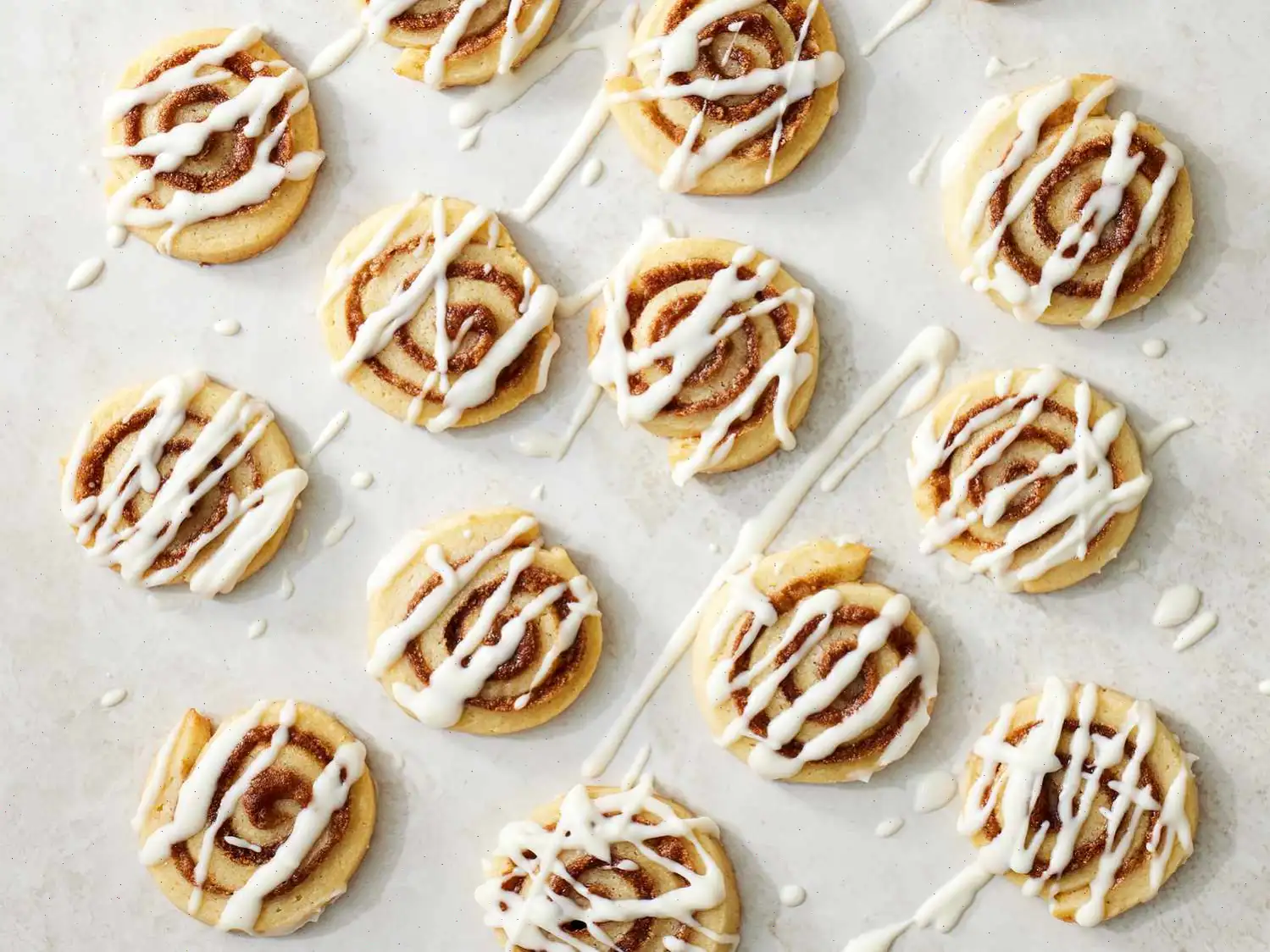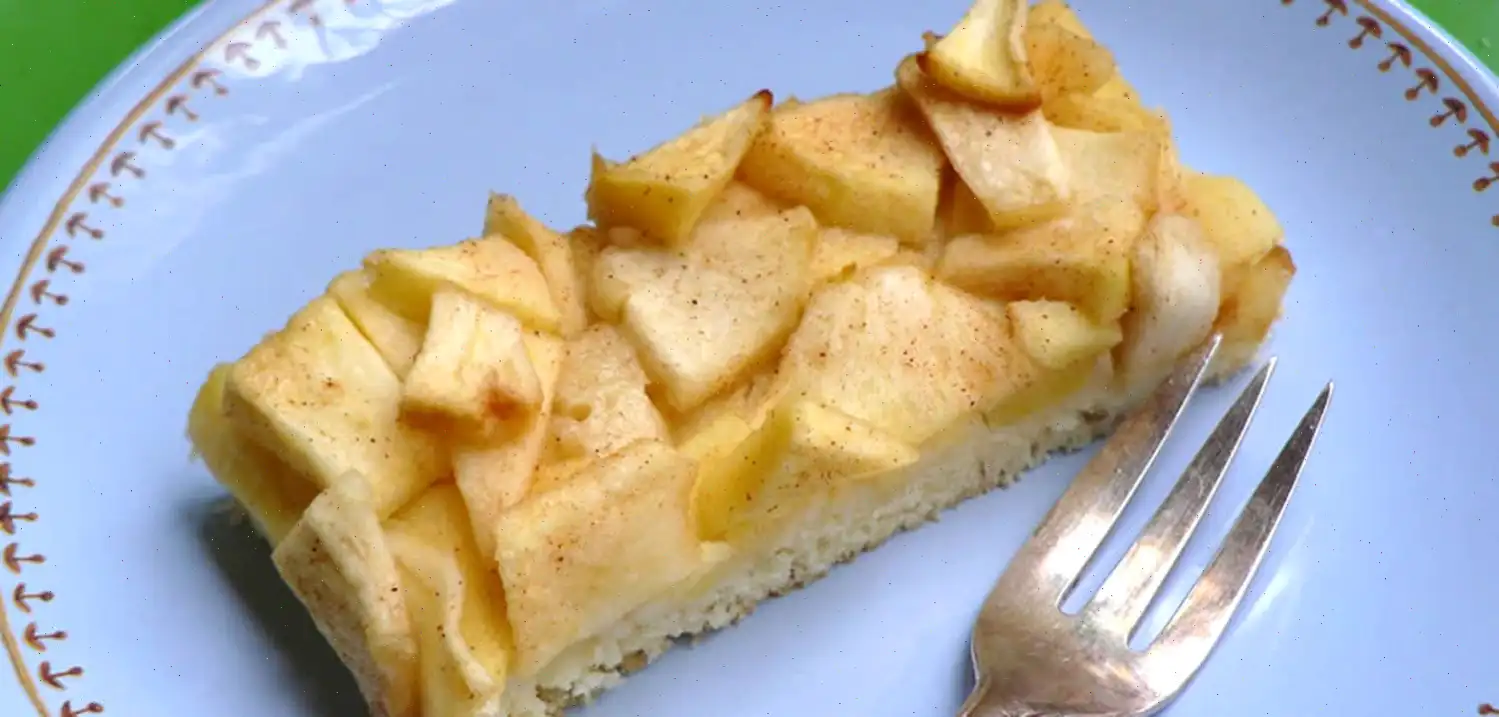
Pumpkin Baklava Recipe
This pumpkin baklava may appear as a modern twist on the classic nut-filled dessert, but it is actually a traditional variation found in Greece. I first encountered this recipe in the fall of 2014, while visiting my Aunt Magda in Athens. Though I'd never heard of it before, I was fortunate enough to spend those crisp autumn days in her kitchen, learning to cook, bake, and absorb her culinary wisdom. The recipe had been passed down from her mother, my Yiayia, and was more of a set of loose guidelines than precise measurements. As with everything she creates, Aunt Magdas interpretation of Yiayias baklava was perfection. After years of reminiscing, I finally decided to recreate this dish, and though it may not be quite as flawless as hers, it comes pretty close. The flavor remains familiar, but the dessert is lighter due to the inclusion of fresh pumpkin and fewer nuts. Its best to prepare it a day in advance, as it improves greatly in texture and flavor overnight.
Ingredients
Syrup:
- 3 cups white sugar
- 2 3/4 cups water
- 1 stick cinnamon
- 3 strips of lemon or orange peel
Baklava:
- 1/2 cup salted butter, melted
- 2 cups walnut halves
- 6 cups shredded pumpkin (from 1, 2 1/2-pound pie pumpkin)
- 1 cup panko breadcrumbs
- 1/2 cup olive oil
- 1/2 cup white sugar
- 2 teaspoons ground cinnamon
- 1/2 teaspoon ground cloves
- 12 sheets phyllo dough, thawed overnight in the refrigerator if frozen
Directions
Step 1: Begin by making the syrup. In a medium saucepan, combine the white sugar, water, cinnamon stick, and citrus peel. Place the saucepan over medium heat and bring the mixture to a boil. Once boiling, continue boiling for 2 minutes before removing from heat. Let the syrup cool completely. (This step can be done up to a week in advance; simply store the cooled syrup in the refrigerator until ready to use.)
Step 2: Preheat your oven to 350F (180C). Brush a 9x13-inch baking dish with some of the melted butter.
Step 3: Place the walnut halves in a food processor and pulse several times until finely chopped into crumbs. In a large mixing bowl, combine the walnuts with the shredded pumpkin, panko breadcrumbs, olive oil, sugar, cinnamon, and ground cloves. Stir the mixture until fully combined.
Step 4: Unroll the phyllo dough, removing one sheet at a time. Cover the remaining dough with a dampened tea towel to prevent it from drying out. Brush the first sheet of dough with melted butter and place it into the prepared baking dish. Gently press down so the dough covers the bottom and sides of the dish. Repeat this process, layering 8 sheets of phyllo dough in total. Dont worry if some sheets tear; its perfectly fine and wont affect the final outcome.
Step 5: Spread the pumpkin mixture evenly over the phyllo base, ensuring it reaches the edges of the dish. Fold any overhanging phyllo dough over the top of the pumpkin mixture.
Step 6: Brush another sheet of phyllo dough with melted butter and place it on top of the pumpkin mixture. Continue layering 6 to 8 more sheets of phyllo, brushing each one with melted butter before adding it. Use a pastry brush to gently scrunch any overhanging dough into the sides of the dish. Drizzle any remaining melted butter over the top of the baklava.
Step 7: Using a sharp knife, carefully cut the baklava into diamond or square shapes through the top layers of phyllo, making sure not to cut through the bottom layers.
Step 8: Place the baklava in the preheated oven and bake for 50 to 60 minutes, or until the phyllo is golden brown and crisp.
Step 9: Once baked, remove the baklava from the oven and immediately pour the cooled syrup over the hot baklava. Add the syrup one ladleful at a time, ensuring that all the syrup is absorbed. Let the baklava rest uncovered for at least 8 hours or overnight before serving.
Cooks Note
The baklavas texture and flavor will improve immensely after resting for at least 8 hours, so resist the urge to cut into it right away. You can easily prepare the baklava up to 2 days in advance. Just be sure to let it rest before serving.
Nutrition Facts
| Nutrient | Per Serving | % Daily Value |
|---|---|---|
| Calories | 360 | |
| Total Fat | 14g | 18% |
| Saturated Fat | 5g | 24% |
| Cholesterol | 15mg | 5% |
| Sodium | 166mg | 7% |
| Total Carbohydrate | 59g | 21% |
| Dietary Fiber | 1g | 5% |
| Total Sugars | 45g | |
| Protein | 2g | 5% |
| Vitamin C | 3mg | 4% |
| Calcium | 30mg | 2% |
| Iron | 1mg | 6% |
| Potassium | 128mg | 3% |
Baklava is a beloved dessert across many regions, especially in the Middle East, the Balkans, and Greece. However, the Pumpkin Baklava brings a refreshing, seasonal twist to this timeless treat. This variation of baklava is less commonly known outside of Greece but has a cherished place in many Greek kitchens, especially during the fall months when pumpkins are in season. While traditional baklava is filled with nuts and honey syrup, the Pumpkin Baklava swaps some of the nuts for fresh pumpkin, creating a lighter, yet equally indulgent dessert.
History of Pumpkin Baklava
The history of baklava itself is a matter of debate, with various cultures claiming it as their own. Many historians trace its roots back to the Ottoman Empire, where baklava became a symbol of luxury and sophistication. Its intricate layers of phyllo dough filled with nuts and sweet syrup have been perfected over centuries. The pumpkin version of baklava, however, is a more recent innovation, adding seasonal flavors that complement the traditional richness of baklava. It is most closely associated with Greece, where it has been made in select households for generations, often as a family recipe passed down through the years. This particular version of baklava was introduced to the author by their Aunt Magda in Athens, representing the homemade, rustic variety that deviates from the more commercialized forms of the dessert found in bakeries.
Regional Characteristics
While traditional baklava can be found in a wide range of countries, from Turkey to Iran, the Greek version stands out for its use of ingredients like walnuts and pistachios, and its characteristic syrup made with honey. The addition of pumpkin to the baklava in Greece reflects the country's love for seasonal produce and the regional preference for incorporating local vegetables into desserts. Pumpkin Baklava is especially popular in autumn when pumpkins are harvested, giving the dessert a fresh, earthy taste that pairs well with the sweetness of the syrup and the crunch of walnuts. In fact, this variation is more common in rural parts of Greece, where people often adapt traditional recipes to the ingredients available in their local environments.
How Pumpkin Baklava Differs from Other Baklava Versions
The Pumpkin Baklava differs from its more traditional counterparts in several key ways. First, the filling is not composed of the usual nuts like walnuts or pistachios alone but incorporates shredded pumpkin, which adds moisture and a subtle sweetness to the dish. This makes the dessert lighter compared to other baklava variations that tend to be more dense due to the heavier use of nuts and butter. Additionally, while most baklava recipes are flavored with cinnamon, this version often includes ground cloves, giving it a distinct, spiced flavor that evokes the warmth of fall.
Where to Serve Pumpkin Baklava
Pumpkin Baklava is typically served during festive occasions, particularly around the fall and winter months when pumpkins are in season. It is a popular dessert at family gatherings and holiday celebrations in Greece, where it can be found on the table during major events such as Christmas, New Year, and even Easter. Given its rich flavor and buttery texture, it is often enjoyed alongside coffee or tea, making it a perfect treat for a cozy afternoon. Due to its unique combination of flavors, this baklava is also a great conversation starter at international dinner parties or potlucks.
Interesting Facts About Pumpkin Baklava
- The inclusion of pumpkin in baklava is believed to be a regional adaptation in Greece, reflecting the country's use of local ingredients in both savory and sweet dishes.
- The syrup used in Pumpkin Baklava often incorporates cinnamon and citrus peel, adding layers of aromatic flavor that complement the earthiness of the pumpkin.
- Like traditional baklava, this dessert improves significantly in flavor after it rests for a few hours, making it a great option for preparing ahead of time.
- Baklava has been enjoyed for centuries, and variations like Pumpkin Baklava show how the dessert continues to evolve, reflecting local tastes and the availability of seasonal ingredients.
- While baklava is a rich dessert, the inclusion of pumpkin in this version reduces the overall heaviness, making it slightly lighter and easier to enjoy in larger quantities.








